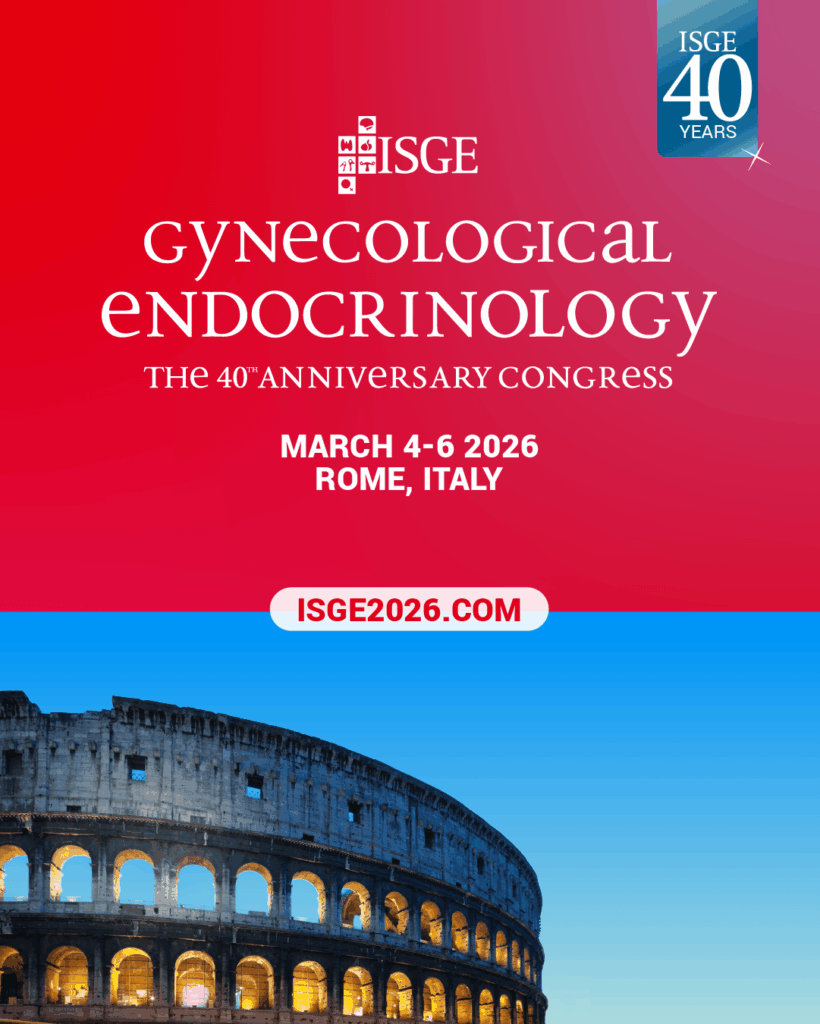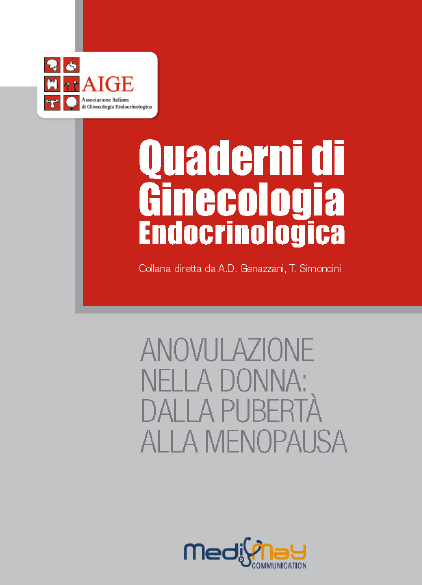-
Adam Czyzyk , Agnieszka Podfigurna , Andrea Riccardo Genazzani, Blazej Meczekalski
The role of progesterone therapy in early pregnancy: from physiological role to therapeutic utility
Gynecological Endocrinology 33: 421-424, 2017
Abstract
Progesterone is a steroid hormone of essential role in reproduction. In early pregnancy, it is responsible for preparation of endometrium for implantation process and maintenance of gestational sac in uterus, also by modulation of maternal immune system. Even though, several indices has been proposed as markers of endogenous progesterone synthesis (progesterone or luteinizing hormone measurements, endometrial biopsy), none has been proved to be reliable in detecting luteal phase defect. Currently, several pharmaceutical formulations are available, but in clinical setting the non-oral formulations seems to be effective in therapy. Progesterone is effective in the treatment of patients undergoing assisted reproductive technology procedure, as a luteal phase support. Some studies showed also its efficacy in the treatment of threatening or recurrent miscarriage, but newer trials neglected this beneficial effect. Due to controversies regarding utility of progesterone supplementation in these conditions, further studies are needed to address this issue.
-
Xueyan Bai, Yang Zhang, Shan Liu, Danni Qu, Hui Su, Haiying Ren & Yuan Li
The decline in serum estradiol on the second day after oocyte retrieval affects the outcome of IVF/ICSI-ET treatment in high ovarian responders
Gynecological Endocrinology 33: 452-457, 2017
Abstract
Objective: To investigate the predictive value of the decline in serum estradiol on the second day after oocyte retrieval on the outcomes of in vitro fertilization (IVF) or intra-cytoplasmic sperm injection and embryo transfer (ICSI-ET) among high ovarian responders.
Design: Retrospective single-center cohort study.
Setting: Tertiary-care, university-affiliated teaching hospital.
Patients Women aged 20–45 years undergoing assisted reproduction treatment from June 2014 to December 2015.
Interventions: A total of 980 cycles were included; 395 high responders (Group 1) and 256 normal responders (Group 3) underwent embryo transfer (ET) in fresh ET cycles. A total of 329 high ovarian responders who underwent cryopreservation of all embryos (Group 2) were recruited as controls. The cases were divided into the following five subgroups according to the rate of serum estradiol decline on the second day after oocyte retrieval: 50.00–59.99% (Subgroup A), 60.00–69.99% (Subgroup B), 70.00–79.99% (Subgroup C), 80.00–89.99% (Subgroup D) and ≥ 0.00% (Subgroup E). The clinical outcomes were analyzed.
Main outcome measures: Clinical pregnancy rate, implantation rate.
Results: In Group 1, the pregnancy rate decreased from 51.33 to 36.72% and the implantation rate decreased from 30.93 to 21.70% when the level of serum estradiol on the second day after oocyte retrieval decreased by more than 80%, which was a statistically significant decline (p < .05). The peak estradiol (E2) value and implantation rate were also significantly different (p < .05). In Group 2, the decline of serum E2 on the second day after oocyte retrieval had no significant effect on the clinical pregnancy rate or the implantation rate. The trend was similar in Group 3.
Conclusions: A decline in the E2 level of > 0% after oocyte retrieval may play an important role in unsatisfactory IVF/ICSI-ET outcomes among high ovarian responders.
-
Kathryn E. Ackerman, Sarah L. Berga, Jay R. Kaplan, George Mastorakos, Madhusmita Misra, M. Hassan Murad, Nanette F. Santoro, Michelle P. Warren
Functional Hypothalamic Amenorrhea: An Endocrine Society Clinical Practice Guideline
J Clin Endocrinol Metab (2017) 102 (5): 1413-1439
Abstract
Objective: To formulate clinical practice guidelines for the diagnosis and treatment of functional hypothalamic amenorrhea (FHA).
Participants: The participants include an Endocrine Society–appointed task force of eight experts, a methodologist, and a medical writer.
Evidence: This evidence-based guideline was developed using the Grading of Recommendations, Assessment, Development, and Evaluation approach to describe the strength of recommendations and the quality of evidence. The task force commissioned two systematic reviews and used the best available evidence from other published systematic reviews and individual studies.
Consensus Process: One group meeting, several conference calls, and e-mail communications enabled consensus. Endocrine Society committees and members and cosponsoring organizations reviewed and commented on preliminary drafts of this guideline.
Conclusions: FHA is a form of chronic anovulation, not due to identifiable organic causes, but often associated with stress, weight loss, excessive exercise, or a combination thereof. Investigations should include assessment of systemic and endocrinologic etiologies, as FHA is a diagnosis of exclusion. A multidisciplinary treatment approach is necessary, including medical, dietary, and mental health support. Medical complications include, among others, bone loss and infertility, and appropriate therapies are under debate and investigation.
-
Lindsey A. Sjaarda, Rose G. Radin, Robert M. Silver,Emily Mitchell, Sunni L. Mumford, Brian Wilcox, Noya Galai, Neil J. Perkins, Jean Wactawski-Wende, Joseph B. Stanford, Enrique F. Schisterman
Preconception Low-Dose Aspirin Restores Diminished Pregnancy and Live Birth Rates in Women With Low-Grade Inflammation: A Secondary Analysis of a Randomized trial
J Clin Endocrinol Metab (2017) 102 (5): 1495-1504 Download
Abstract
Objective: To investigate the effect of preconception-initiated LDA on pregnancy rate, pregnancy loss, live birth rate, and inflammation during pregnancy.
Design: Stratified secondary analysis of a multicenter, block-randomized, double-blind, placebo-controlled trial.
Setting: Four US academic medical centers, 2007 to 2012.
Participants: Healthy women aged 18 to 40 years (N = 1228) with one to two prior pregnancy losses actively attempting to conceive.
Intervention: Preconception-initiated, daily LDA (81 mg) or matching placebo taken up to six menstrual cycles attempting pregnancy and through 36 weeks’ gestation in women who conceived.
Main Outcome Measures: Confirmed pregnancy, live birth, and pregnancy loss were compared between LDA and placebo, stratified by tertile of preconception, preintervention serum high-sensitivity C-reactive protein (hsCRP) (low, < 0.70 mg/L; middle, 0.70 to < 1.95 mg/L; high, ≥1.95 mg/L).
Results: Live birth occurred in 55% of women overall. The lowest pregnancy and live birth rates occurred among the highest hsCRP tertile receiving placebo (44% live birth). LDA increased live birth among high-hsCRP women to 59% (relative risk, 1.35; 95% confidence interval, 1.08 to 1.67), similar to rates in the lower and mid-CRP tertiles. LDA did not affect clinical pregnancy or live birth in the low (live birth: 59% LDA, 54% placebo) or midlevel hsCRP tertiles (live birth: 59% LDA, 59% placebo).
Conclusions: In women attempting conception with elevated hsCRP and prior pregnancy loss, LDA may increase clinical pregnancy and live birth rates compared with women without inflammation and reduce hsCRP elevation during pregnancy.
-
Jane A. Cauley, Michelle E. Danielson, Guru Rajesh Jammy, Doug C. Bauer, Rebecca Jackson, Jean Wactawski-Wende, Rowan T. Chlebowski, Kristine E. Ensrud, Robert Boudreau
Sex Steroid Hormones and Fracture in a Multiethnic Cohort of Women: The Women’s Health Initiative Study (WHI)J Clin Endocrinol Metab (2017) 102 (5): 1538-1547
Abstract
Design and Setting: We performed a nested case-control study within the prospective Women’s Health Initiative Observational Study. Incident nonspine fractures were identified in 381 black, 192 Hispanic, 112 Asian, and 46 Native American women over an average of 8.6 years. A random sample of 400 white women who experienced an incident fracture was chosen. One control was selected per case and matched on age, race/ethnicity, and blood draw date. Bioavailable estradiol (BioE2), bioavailable testosterone (BioT), and sex hormone–binding globulin (SHBG) were measured using baseline fasting serum. Conditional logistic regression models calculated the odds ratio (OR) and 95% confidence interval (CI) of fracture across tertiles of hormone.
Results: In multivariable and race/ethnicity-adjusted models, higher BioE2 (>8.25 pg/mL) and higher BioT (>13.3 ng/dL) were associated with decreased risk of fracture (OR, 0.65; 95% CI, 0.50 to 0.85; P trend = 0.001 and OR, 0.76; 95% CI, 0.60 to 0.96; P trend = 0.02, respectively). The interaction term between race/ethnicity and either BioE2 or BioT was not significant. There was no association between SHBG and fracture risk. In models stratifying by race/ethnicity, higher BioE2 was associated with a lower risk of fracture in both white women (OR, 0.56; 95% CI, 0.36 to 0.87) and black women (OR, 0.61; 95% CI, 0.39 to 0.96). Higher BioT was associated with a significantly lower fracture risk in only black women (OR, 0.65; 95% CI, 0.43 to 1.00), P trend = 0.03.
Conclusions: Serum BioE2 and BioT are associated with fracture risk in older women irrespective of race/ethnicity and independent of established risk factors for fracture.
-
Kristy A. Brown, Neil M. Iyengar, Xi Kathy Zhou, Ayca Gucalp, Kotha Subbaramaiah, Hanhan Wang, Dilip D. Giri, Monica Morrow, Domenick J. Falcone, Nils K. Wendel, Lisle A. Winston, Michael Pollak, Anneloor Dierickx, Clifford A. Hudis, Andrew J. Dannenberg
Menopause Is a Determinant of Breast Aromatase Expression and Its Associations With BMI, Inflammation, and Systemic MarkersJ Clin Endocrinol Metab (2017) 102 (5): 1692-1701
Abstract
Context: Most estrogen-dependent breast cancers occur after menopause, despite low levels of circulating estrogens. Breast expression of the estrogen-biosynthetic enzyme, aromatase, is proposed to drive breast cancer development after menopause. However, the effects of menopause on breast aromatase expression are unknown.
Objective: To determine the effect of menopause on breast aromatase expression in relation to body mass index (BMI), white adipose tissue inflammation (WATi), and systemic markers of metabolic dysfunction.
Design, Setting, and Participants: Cross-sectional study of 102 premenopausal (age 27 to 56) and 59 postmenopausal (age 45 to 74) women who underwent mastectomy for breast cancer treatment/prevention.
Outcome: Breast tissue was assessed for the presence of crown-like structures and the expression and activity of aromatase. Systemic markers examined include interleukin (IL)-6, insulin, glucose, leptin, adiponectin, high-sensitivity C-reactive protein (hsCRP), cholesterol, and triglycerides. Multivariable analysis was performed for aromatase messenger RNA (mRNA) in relation to BMI, WATi, and blood markers.
Results: Postmenopausal women had higher BMI and more breast WATi than premenopausal women. Fasting levels of IL-6, glucose, leptin, hsCRP, and homeostatic model assessment 2 insulin resistance score were higher in the postmenopausal group. BMI was positively correlated with aromatase mRNA in both pre- and postmenopausal women. Aromatase levels were higher in breast tissue of postmenopausal women, with levels being higher in inflamed vs noninflamed, independent of BMI. Adipocyte diameter and levels of leptin, hsCRP, adiponectin, and high-density lipoprotein cholesterol were more strongly correlated with aromatase in postmenopausal than premenopausal women.
Conclusions: Elevated aromatase in the setting of adipose dysfunction provides a possible mechanism for the higher incidence of hormone-dependent breast cancer in obese women after menopause.
-
Carole R. Mendelson, Alina P. Montalbano, Lu Gao
Fetal-to-maternal signaling in the timing of birthJournal of Steroid Biochemistry & Molecular Biology 170 (2017) 19–27
Abstract
Preterm birth remains the major cause of neonatal morbidity and mortality throughout the world. This is due, in part, to our incomplete understanding of the mechanisms that underlie the maintenance of pregnancy and the initiation of parturition at term. In this article, we review our current knowledge of the complex, interrelated and concerted mechanisms whereby progesterone maintains myometrial quiescence throughout most of pregnancy, as well as those that mediate the upregulation of the inflammatory response and decline in progesterone receptor function leading to parturition. Herein, we review findings that demonstrate a role of the fetus in the timing of birth. Specifically, we focus on our own studies indicating that maturation of the fetal lung and enhanced secretion of the surfactant components, surfactant protein A (SP-A) and the potent inflammatory glycerophospholipid, platelet-activating factor (PAF), initiate a signaling cascade culminating in parturition. Our studies suggest an essential role of steroid receptor coactivators, SRC-1 and SRC-2, which activate expression of genes encoding SP-A and LPCAT1. LPCAT1 is a key enzyme in the synthesis of PAF, as well as DPPC, a highly surface-active glycerophospholipid component of surfactant. Thus, we describe a novel pathway through which the fetus contributes to the initiation of labor by signaling the mother when its lungs have achieved sufficient maturity for survival in an aerobic environment.
-
Richard J. Santen, Yan Song, Ji-ping Wang, Wei Yue
Preclinical breast effects of a tissue selective estrogen complex (TSEC) including conjugated estrogen with bazedoxifeneJournal of Steroid Biochemistry & Molecular Biology 170 (2017) 61–64
Abstract
The first tissue-selective estrogen complex (TSEC), consisting of a combination of a conjugated equine estrogen (CEE) and bazedoxifene (BZA), has been approved for treatment of the menopause in the USA and European Union. We have postulated that this TSEC might block the estrogenic effects of CEE on breast tissue and thereby prevent breast cancer growth. This manuscript, representing a presentation at a Festschrift honoring Evan Simpson, reviews our published data BZA blocked the in vitro effects of both estradiol and CEE on cell growth and gene expression in MCF-7 cells. BZA completely blocked CEE- or E2-stimulated ductal and terminal end bud growth of immature murine mammary glands and the growth of experimental breast cancers. These findings provide a rationale for future clinical studies to determine whether this TSEC prevents the growth of occult breast cancer in women. Andrew J. Dannenberg






